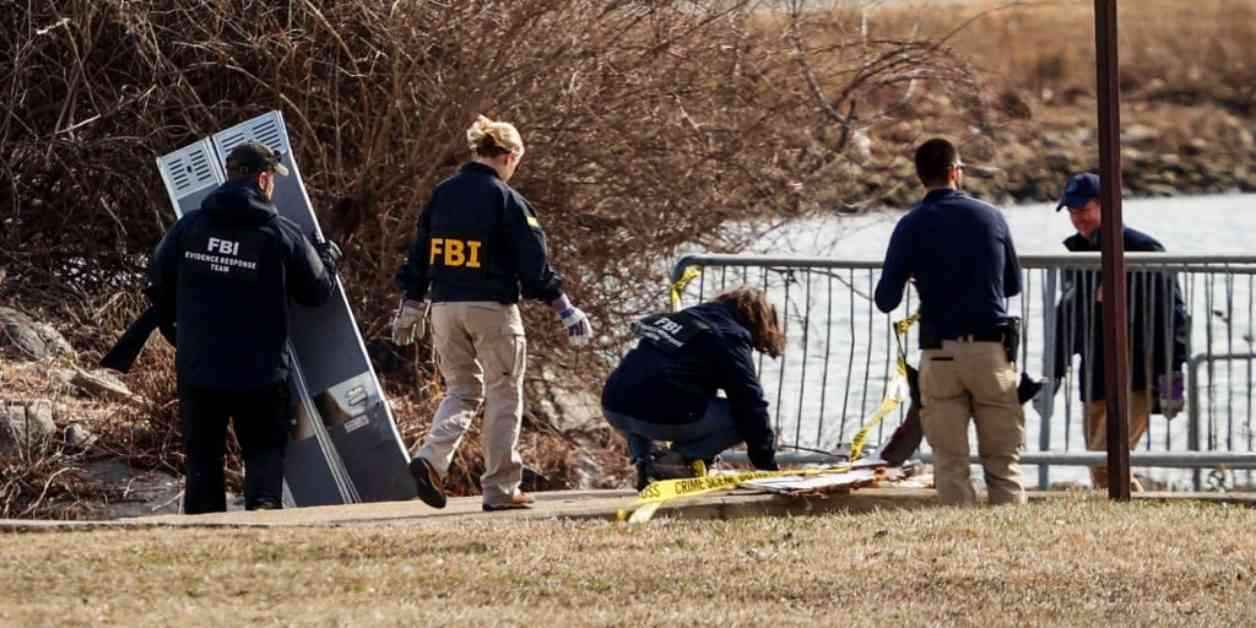Tragedy Strikes in the Skies Over D.C.: A Closer Look at Aviation Safety and Air Traffic Controller Shortages
A devastating midair collision between an American Airlines passenger jet and an Army helicopter has once again cast a shadow of doubt over aviation safety in the United States. The incident, which occurred near Reagan Washington National Airport in Arlington, Virginia, has reignited concerns following a series of close calls at airports in recent years.
Reagan Washington National Airport, the site of the crash, experienced at least two alarming incidents in the past year alone. In one instance, a Southwest Airlines plane nearly intersected a runway being used by a JetBlue flight for takeoff. Just a month later, an American Airlines jet narrowly avoided colliding with a small aircraft. These near misses are among the 1,757 documented “runway incursions” reported by the Federal Aviation Administration in 2024, underscoring the potential dangers faced in the aviation industry.
The tragic collision on Wednesday marked the first fatal disaster involving a U.S. commercial aircraft since 2009, when a propeller plane crashed into a home near Buffalo, New York, claiming 45 lives. The American Airlines jet was carrying 60 passengers and four crew members, while the Black Hawk helicopter had three individuals onboard. The fatal event unfolded as the flight was approaching the Washington, D.C.-area airport for landing, resulting in a tragic loss of life over the Potomac River around 9 p.m. ET.
Hassan Shahidi, president and CEO of the Flight Safety Foundation, a nonprofit organization dedicated to aviation safety research and advocacy, emphasized the gravity of such incidents. “Even one is one too many,” Shahidi remarked, emphasizing the critical need for enhanced safety measures in the aviation sector.
Escalating Concerns Over Air Traffic Controller Shortages
The recent surge in near misses and the tragic collision have drawn attention to the persistent shortage of air traffic controllers across the United States, a factor that experts believe may have contributed to these incidents. According to Shahidi, numerous FAA facilities have been grappling with staffing challenges, further exacerbated by the demanding nature of the job and stringent retirement regulations.
Despite ongoing recruitment efforts, the shortage of air traffic controllers remains a pressing issue. The FAA’s latest workforce plan revealed a deficit of 3,000 controllers needed to adequately staff air traffic control stations nationwide, as of May. While the agency has made strides in hiring new controllers, the training and qualification process is lengthy, requiring approximately two years before individuals are fully prepared to handle the demands of the job.
A 2023 report from an independent aviation review panel echoed concerns about air traffic controller shortages, citing the FAA’s outdated systems and insufficient funding as urgent areas requiring attention to avert potential disasters. Shahidi further highlighted the complexity of airspace around Reagan Washington National Airport, emphasizing the airport’s high traffic volume and the unforgiving nature of its airspace.
Calls for Enhanced Safety Measures and Vigilance
In the wake of Wednesday’s tragedy, scrutiny has intensified on the FAA’s staffing protocols and operational standards. While initial reports suggest that staffing at Reagan Washington National Airport was not at typical levels on the night of the collision, questions arise about the adequacy of safety measures and the potential impact of staffing shortages on aviation safety.
Transportation Secretary Sean Duffy, while acknowledging the standard communication protocols in place between air traffic controllers and the aircraft involved, expressed a somber acknowledgment of preventable tragedies. Despite efforts to maintain standard procedures, the need for enhanced safety measures and vigilance in the aviation industry remains paramount to prevent future disasters.
As the investigation into the midair collision continues, the aviation community grapples with sobering questions about safety, staffing, and operational oversight. The tragic events of Wednesday serve as a poignant reminder of the inherent risks faced in the skies and the critical need for ongoing improvements to ensure the safety of passengers and crew members alike.






















